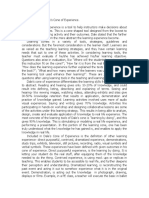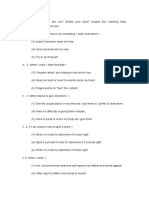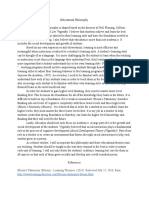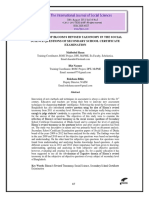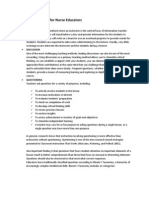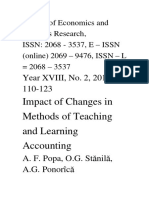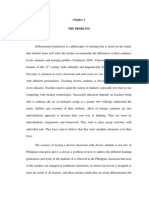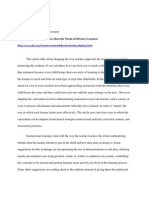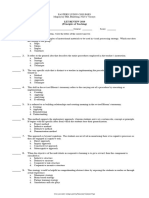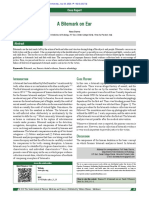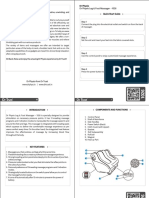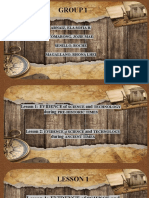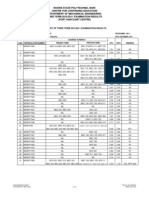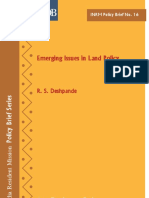0% found this document useful (0 votes)
27 views3 pagesChapter 11-Edck4
The document discusses the Revised Bloom's Taxonomy, emphasizing cognitive levels such as Creating, Evaluating, and Understanding, and their application in classroom activities. It also covers Dale's Cone of Experience, highlighting the importance of direct experiences for retention and the use of multimedia to engage various learning modalities. Additionally, it addresses different learning styles (Visual, Auditory, Kinesthetic) and suggests differentiated instructional strategies to accommodate all learners.
Uploaded by
edlyn dela cruzCopyright
© © All Rights Reserved
We take content rights seriously. If you suspect this is your content, claim it here.
Available Formats
Download as DOCX, PDF, TXT or read online on Scribd
0% found this document useful (0 votes)
27 views3 pagesChapter 11-Edck4
The document discusses the Revised Bloom's Taxonomy, emphasizing cognitive levels such as Creating, Evaluating, and Understanding, and their application in classroom activities. It also covers Dale's Cone of Experience, highlighting the importance of direct experiences for retention and the use of multimedia to engage various learning modalities. Additionally, it addresses different learning styles (Visual, Auditory, Kinesthetic) and suggests differentiated instructional strategies to accommodate all learners.
Uploaded by
edlyn dela cruzCopyright
© © All Rights Reserved
We take content rights seriously. If you suspect this is your content, claim it here.
Available Formats
Download as DOCX, PDF, TXT or read online on Scribd
/ 3











